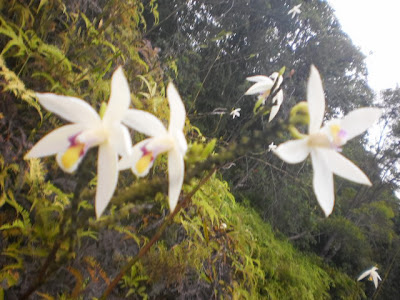
The indigenous languages of Borneo is divided into 10 subgroups (Hudson 1978).
The Malayic subgroup includes Iban and Malay. The diversity and
relative archaism of the Malayic languages spoken in West Borneo suggest
that the Malayic homeland may have been in this area.
The Tamanic languages are close enough to the South Sulawesi
languages to form a subgroup with them. They have some striking
phonological developments in common with Buginese, with which they seem
to form a separate branch within the South Sulawesi language group.
The Land Dayak languages have a few striking lexical and phonological
similarities in common with Aslian languages. This suggests that Land
Dayak originated as the result of a language shift from Aslian to
Austronesian, or that both Land Dayak and Aslian have in common a source
from an unknown third language.
Malayic Dayak languages are part of the Malayic sub-family
(including, among others, Malay, Minangkabau and Banjarese), Tamanic
languages are most closely related to South Sulawesi languages, and
Sabahan languages subgroup with the Philippine languages (Hudson 1978).
Hudson (1970) should be credited for identifying and defining the
Malayic Dayak subgroup. Previous scholars were not aware of this
subgroup and classified the Malayic Dayak languages either with the
Malay dialects spoken by Muslims on the Borneo coast or with the Land
Dayak languages.
In this way they classified Iban as a Malay dialect, and Salako as a
Land Dayak dialect with strong Malay influence. Kendayan Dayak was
seemingly also considered as a strongly Malayicized variety of Land
Dayak (cf. Cense and Uhlenbeck 1958). Hudson, however, calls Iban,
Kendayan, Salako and other closely-related Dayak languages ‘Malayic
Dayak’, and he classifies them together with Malay and other Malay-like
languages
[10]
into the ‘Malayic’ linguistic group. His term ‘Malayic Dayak’ is meant
to distinguish Malayic languages spoken by non-Muslims in Borneo from
other Malayic languages.
Hudson’s classification also pays attention to the fact that the
Malayic Dayak languages are indigenous, whereas other Malayic languages
in Borneo were introduced from Sumatra and/or Malaysia. This is
important for the search of the original Malayic homeland. Three areas
have been considered as a homeland: Sumatra, the Malay peninsula and
Western Borneo.
Kern (1889) was in favour of a homeland in the peninsular Malay area,
and he rejected the possibility of a Bornean homeland. But his
arguments do not hold (Adelaar 1988). The historical and linguistic
evidence suggests that the Malayic settlements in the Malay peninsula
are of more recent date than those in Sumatra or in Borneo (Bellwood
1993). In view of the geographical spread (in the interior), the variety
(which in some cases cannot be explained as due to contact-induced
change) and the sometimes conservative character of Malayic Dayak
languages, some linguists tend to favour Borneo as the homeland of the
Malayic languages (cf. Blust 1988; Adelaar 1988, 1992).
The dialects belonging to the Tamanic subgroup are Embaloh, Kalis and
Taman. They are spoken in the Hulu Kapuas Regency of West Kalimantan
near the head of the Kapuas River and its tributaries.
If, as seems to be the case, Tamanic is more closely related to
Buginese than to other South Sulawesi languages, it has to be included
in the South Sulawesi language group in a subgroup with Buginese (or
with Buginese and Campalagian, cf. Grimes and Grimes [1987] and Sirk
[1989]).
It is evident that the Tamanic-Buginese link has no connection with
the Buginese migrations to the coasts of East, South and West Borneo
from at least the 17th century on. The Buginese kept their identity or
merged with the local Malays. Their migration to Borneo is a more recent
phenomenon in comparison to a Buginese-Tamanic split, which must have
preceded the Islamization of South Sulawesi. It must have happened so
long ago that it allowed the Tamanic speakers to adapt and assimilate to
a considerable degree to their Bornean environment, and to forget their
“exo-Bornean” (from outside Borneo) origin.
As to the original homeland of Tamanic, as a consequence of its
apparent membership of the South Sulawesi language group it is most
likely that at some point in time its speakers have left South Sulawesi
and have migrated to Borneo.
~ K. Alexander Adelaar (Borneo as a Cross-Roads for Comparative Austronesian Linguistics)














.jpg)






